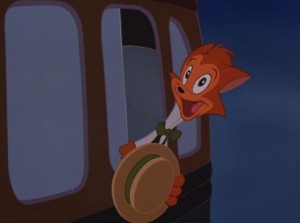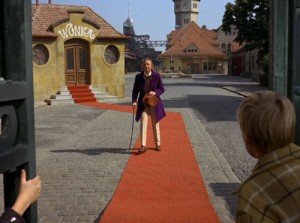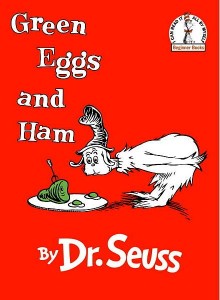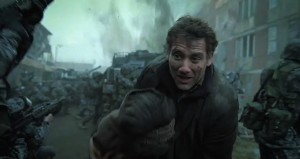Archive for category Film
CHILDHOOD REVISITED – CATS DON’T DANCE
Posted by kjohnson1585 in Animation, Childhood Revisited, Film, Music, Uncategorized, Writing on August 31, 2010
Cats Don’t Dance – 1997
Director: Mark Dindal
Starring: Scott Bakula, Jasmine Guy, Natalie Cole
Screenplay by: Mark Dindal, Robert Lence, Roberts Gannaway, Cliff Ruby, others
The Netflix blurb described Cats Don’t Dance as a “nostalgic animated version of classic MGM musicals.” That got me pretty stoked. As a youngin’, I had failed to make that connection since, while I was aware of the existence of musicals, I didn’t quite grasp their impact and significance in the overall development of American cinema and stardom. Also, watching a non-Disney animated film is always a treat, since you get to experience different themes, ideas, and movements. And, let’s be honest: Disney wouldn’t have released a film like this with such a lame title. Cats Don’t Dance? Really? The furry version of White Men Can’t Jump? Not exactly the warmest sounding title around.
NOSTALGIC LENS: I remember going to see this film by myself. It looked like a fun and eccentric romp through some crazy sets, and it was. Just TOO eccentric. Everything was going so fast and moving in blurs, harsh cuts, and speedy camera tricks that I had no idea what was going on. I remember none of the songs or secondary characters, save for the big-ass butler and really, really stupid ending sequence that actually irritated me, even in terms of cartoon logic. I’ll save that complaint – if it still holds – for the write-up.
DOES IT HOLD UP: I’ll say this: Cats Don’t Dance was not intended for the big screen. It’s a film tailor-made for the small screen – for closer observation. How often do you hear that?
Cats was marketed as a simplistic kids film of colors and frantic movement, talking animals and an Animaniacs-like exaggeration of animation, which simply put, means it’ll keep kids quiet for an hour. The movie, however, is a brightly-rainbow’d homage to not only the MGM classic musical, but the original musical nature of the early black & white/Merrie Melodies era of sing-songy cartoons. It’s a historical piece – a pretty goddamn esoteric one, but the signs are all over the celluloid.
Of course, young kids wouldn’t get it. Of course, parents wouldn’t understand what the film was delineating. The only people that may have been aware of the film’s aesthetic ties may have been historical animation fans, but that requires a clear and free understanding and appreciation of the history of American animation (and film) of a specific time period of a specific genre. That’s a rather egregious disconnect. In that way, Cats Don’t Dance is a failure, since it does little to draw its audience in and clarify its intent.
However, if you ARE aware of all of this, Cats Don’t Dance is a fresh, glorious treat of frantic action, a ballsy film against the slow, straight-forwardness of Disney or Pixar films. It’s tale – homely cat Danny travels to Hollywood to make it as a big time dancer and singer – is so typically cliche of one-third of the plot of most musicals, but that’s the point. Its entertainment draws from the energy of songs that break out of no where, of speedy dance numbers that develop into visual pastiches of its medium, of physical gags no longer utilized save in Spongebob. Check out the first ten minutes:
The simplicity of the opening montage segues into a much more exciting music piece. It’s like we’re going backwards; “Now Our Time Has Come” is such a 90s “hope song,” but “Danny’s Intro” is a play to exploring that new Hollywood space, a Wizard of Oz-like ballad of early triumph. Hello, 50s.
As I mentioned, Cats Don’t Dance homages the animated musical shorts as well. Remember when animated figures would grab random objects in a junkyard or alley and make awesome impromptu music?
I can’t help but think about this notorious cartoon when thinking about this film:
(You may have heard this on a certain South Park episode. Also – my man Tex directed this classic.)
The movie is filled with moments like this, as well as surprisingly sharp jokes about the time period. Sure, some are groaners (Rats being offended by the line “I smell a rat”), but there are some nifty ones, like when antagonist Darla Dimple (an evil Shirley Temple clone) only bites off the heads of animal crackers in front of Danny. (Darla’s offer, though, excites him so much that he starts eating the crackers too. In fact, the entire sequence between Danny and Darla is a lot of fun.)
Which is why the ending disappoints. Musicals, in general, seem to have weak, “JUST WRAP IT UP” type finales that’s all style and no substance. Whether Cats Don’t Dance played to that or not still doesn’t make it any better. Danny’s fight with big brute Max is exciting (and a marvel in animated form), but the ending sequence does nothing to build on that. Darla flicks a number of switches to try and ruin Danny and company’s final number, but it just makes it more awesome. It lacks the pluckiness of Danny’s earlier battle; none of the characters ‘fight’ through the chaos to deliver a great piece. Everything just works out. Ho-hum.
But for one hour, Cats Don’t Dance is a loose, whimsical, enjoyable film, a song/dance “cartoon-cartoon,” and not simply an animated live-action film. (The last animated film to employ such a free-sense of itself? The Emperor’s New Groove.) And it’s surprisingly relevant. Darla essentially screws Danny over; sure, Danny uses his skills and abilities to bounce back and win in the end, but he too had to do some sneaky shit to even earn that right (break into the theater of Darla’s movie premiere.) As much as we’d like to think that our abilities should speak for themselves, unfortunately in this job market, we may have to get a bit dirty before starting the cleansing process.
IN A NUTSHELL: I found myself really drawn to this film, so much so that I wanted to watch it a second time almost immediately. Sure, it’s flawed, but it’s a movie that’s one of its kind; a film that aims to be more aesthetically informative and historically nostalgic. Does it work 100%? No. But it does make you pine for the days where you can sing-a, along with the moon-a and the June-a, and the spring-a. While avoiding an anvil or six.
EDIT: I should have mentioned that Gene Kelly himself worked as a consultant on the film before he past away, which clearly contributes to the show’s wonderful energy and dance numbers.
NEXT UP: Homeward Bound: The Incredible Journey
CHILDHOOD REVISITED – WILLY WONKA AND THE CHOCOLATE FACTORY
Posted by kjohnson1585 in Childhood Revisited, Film, Music, Uncategorized, Writing on June 4, 2010
Willy Wonka and the Chocolate Factory – (1971)
Director: Mel Stuart
Starring: Gene Wilder, Jack Alberston, Peter Ostrum
Screenplay by: Roald Dahl, David Seltzer
(I apologize for the delays with the Childhood Revisited saga. It’s been a tough couple of months, and as I started working on 2 side projects, as well as providing the occasional write-up for Destructoid [along with the day job], which left me struggling to do weekly writeups. So while I won’t be getting back into the weekly C.R. reviews, I’ll try and provide one or two every month. No promises, as I also like to write about other things. :) )
I had the recent pleasure of watching The Fantastic Mr. Fox, which was a lot more fun than I expected. And with my recent foray into all things animated, light, whimsical and fun, I thought it would be fitting to try re-watching Willy Wonka. (I wonder if I should review James and the Giant Peach at some point.) It was supposed to be a Valentine’s Day write-up, then an Easter one, but I missed all those dates, so now it’s simply a regular one. I’m a bit rusty with my analysis of these things, so forgive me if it seems a bit “off.”
NOSTALGIC LENS: Every so often, there’s a not-so-subtle push to rear kids via their (supposedly) most-loved passion: candy. This and books like The Chocolate Touch used thinly-veiled metaphors to teach lessons through the delight and, uh, power of confectionery. I liked candy, but didn’t LOVE it, so I pretty much tossed aside the lessons as pointless to me. As for the movie itself, I remembered bits and pieces, but nothing that stood out, save for the chocolate river scene. Oddly enough, the part that freaks people out the most – the psychedelic boat ride – was completely gone from my memory.
DOES IT HOLD UP: I love the 70s completely unironically – from its overall sense of fashion and style, to its endearing exuberance to its cheesy TV shows, lame game show concept, overwrought music, and “whatever” dance styles in vogue (the commitment to these entertainment styles is what makes them stand out). 70s films were, overall, of two types: deep in a bizarre sense, and comical in an ironic, detached sense. One of the reasons Star Wars stood out was that its blockbuster sensibilities was so novel and straightforward and played everything real.
Willy Wonka makes great use of the latter aesthetic, being such a whimsical, devil-may-care type of film. I’ve never read the original novel, but even I can gather how much it deviated from it. (Apparently Dahl hated it.) It’s a musical, yes, but even through its melodies and comedy, the film just breaks from its original narrative not only for song cues, but for random gags attributed to a specific point in the story. It’s two insane stories in one: a international assault-search for golden tickets in Wonka bars, and a tour of Wonka’s eccentric factory with goofy yet semi-dark consequences, and during each section, we’re treated to almost variety-show-like moments that seem to take in the full extent of filmic styles of the time. The separate beats seem off but are remarkably held together by a strong and coherent style, a fun cast, and a catchy batch of tunes.
This ten minute clip is the perfect epitome to showcase what I mean. The slightly awkward “child in the chocolate” part is undermined by goofy faces and Wonka’s witticisms – which is then undermined again when he is sucked up the tube into god-knows-where. Scary? Not for long – a goofy whistle and a Oompah Loompah song calms the nerves and teaches you a quiet lesson, kiddies. That’s fine. And then it’s a boat ride into a drug-fueled TUNNEL OF HORROR, because why not?
Then it’s back to the fun stuff.
Willy Wonka is a huge risk of a film, because there’s no reason for anything to happen the way it does. There no need for the music numbers, or the side jokes, or the abject weird tunnel scene or any number of visual elements; nor is Wonka supposed to be a laureate of classic literature and poetry. But it’s there. And if there’s one thing that the internet has taught me, it’s that if you’re going to do something for no reason, you might as well do it amazingly, like if you were to, oh, let’s say, do a live-action version of the song “After Today” from A Goofy Movie.
Of course, not all of it is random, and I’m happy to say that the parts that do matter are just as great as the parts that don’t. Gene Wilder is a great Wonka, that perfect mystery of a character who’s both carefree and careless, who carries the film during ever dark and light moment with nary a concern in the world. All the children were surprisingly great, even being mostly one note, although I will give special mention to Veruca Salt, played by Julie Dawn Cole, for being such a great spoiled brat and really owning the character. The set design and cinematography is exquisite, the gags still hold up, and the music is exceedingly endearing: tell me you don’t want to sing along to “Pure Imagination”:
Still, its dated aesthetic is still apparent, and as I mentioned earlier, certain gags come off a bit stilted and awkward. (And that ending is so tacked on and rushed that it’s really disappointing). But overall, its enjoyable and, unlike other musicals, the songs aren’t way too long.
IN A NUTSHELL: Want makes this movie truly work is that, despite its visual datedness, it’s still really a delight and would definitely hold up for children today (which I couldn’t quite say for something like The Goonies or Wizard of Oz.) It’s emphasis on kids and their behavior, against the backdrop of sugary goodness (which will NEVER grow old) makes Willy Wonka a particularly, yet truly, timeless classic.
NEXT FILM: Cats Don’t Dance
The Biggest Problem with the “Video Games as Art” Argument…
Posted by kjohnson1585 in Film, Television, Uncategorized, Video Games, Writing on April 27, 2010
… is the following question: What is art, today?
In February of 2005, Christo and Jeanne-Claude installed and designed over 75 thousand “gates” along a pathway through Central Park, New York. They remained there for only sixteen days before they were removed and dismantled. According to Wikipedia, the showcase was inspired by the Japanese torii gates, which are usually placed along the entrance to Shinto shrines.

In 2007, artist Wendu Gu debuted a massive undertaking, whereby she and her assistants gathered over 430 pounds of human hair, cleaned and braided it, and strung it all over the Baker-Barry Library at Dartmouth College. I was attending this school when this event happened. It sounds gross, but it was sanitary, and nifty, if in the oddest sense.

What is art, today? It is global. It is digital. It is not post-Modern (itself a term impossible to define), but post-post-Modern. It is combination of the past/present, East/West, North/South “division”. It is the binaries, redefined. It is art, not-art, and the very manner in which we experience art.
And it has to be. We’re too far along in this decade, too intelligent, too interconnected to no longer discredit or discount the works of other nations, other people, other genres as art – or art of “class” or “wealth”. I’m reminded of the relatively recent 1970s decision to study the diaries, journals, and writings of the common people to study history – social history, they called it. It was supposed to reinforce traditional views of history, the big-man approach to the field, but instead, it forced several historians to rethink the nature of history. (The freed slaves were thought, for example, to be ‘prone’ towards their lot in life, due to their lack of intelligence. It is now fairly well understood that the freed slaves were very smart, but played “dumb” more or less to protect themselves and their families from the violence that would be unleashed upon them if certain radicals discovered their “smarts.”) (After the Fact, Davidson and Lytle)
The Gates connection to traditional Japanese architecture and Gu’s global hair-collection project are manifestations of the contemporary issues of art as we have to understand it today. We can’t constantly compare the Now to the art of the past – not to say they do not have value, for they do; Shakespeare is certainly art; so is Picasso, Beethoven, Contempt. But under this strict definition and narrow lens, it seems impossible to make art today; all potential venues in some format now is parody, is pastiche, is copy, is simulation, is simulacrum. It’s global, universal, multi-natural and multi-faceted. It’s interaction, interactivity, communication, and the methods in which we do all of that. It’s everything.
Roger Ebert, as per his recent blogpost, would be hard pressed to argue with Gu, Christo and Jeanne-Claude, and Richard Prince that their work is not art. Prince is responsible for “appropriation art,” photographing other people’s photographs. He applied this to the Marlboro Man, which makes for an interesting question: is the Marlboro Man art? If not, is the photograph of it art? If not, why the hell was it hanging in the Guggenheim?
But that is it. Art is more than the aesthetics and the personal, subjective sensation we feel when we experience it (although it is part of it). It is the QUESTIONS that are inevitably derived when we experience art. It expands our thinking, our criticism, our viewpoint of the world around us, from the little, the frivolous, the silly, to the profound, the majestic, the sublime. Is comedy art? Does the fact that Shakespeare’s work may not be attributed to him still make his work artistic? Is the fact that Raphael, being more or less a copycat, mean he is less an artist than Da Vinci? Let’s talk about it. Let’s debate this. Let’s DISCUSS.
The two issues I have with Ebert’s analysis has less to do with his belief and more to do with his methodology and mindset. 1) Not playing a game yet denoting it not art is flawed in the most obvious of ways. 2) Refusing to play a game to judge whether a game is art is every more egregious, especially coming from someone as well-spoken and intelligent as he is. Dr. Seuss taught children this mistake in Green Eggs and Ham.
Had he played a game and denoted it not art – well, that would be something else. That would make for a much more interesting dialogue, one that would be much more coherent and grounded. And that, that would be the beginning of the language of art for video games, of the interactivity and “immersion” of entertainment.
I have, in my hands, TONS of essays about so many elements and facets of film and the media of today that it’s almost sad. (Thanks, Dartmouth!) I have: “An Aesthetic of Astonishment: Early Film and the (In)Credulous Spectator” by Tom Gunning (an essay showcasing early films as thrill rides than mistaken assaults on the audience); “How Films Mean” by Geoffrey, Nowell-Smith (a dialogue on how to “read” film); “Anal Rope” by D. A. Miller (a queer theorist reading of Hitchcock’s Rope). Linda Williams focuses SOLELY on the audience’s pre-expectation of the film Psycho, on how it reinvented the ad campaign and the visual/visceral reaction of said audience in “Discipline and fun: Psycho and postmodern cinema.” I could go on; in my studies, I’ve read over a hundred different essays that served to deal with, in some format, of film, cinema, television, the “new media,” and post-Modernism (whatever that means). Ebert has a bigger fight, in reality, than the mere fourteen year-old boys that seek mere legitimacy in their past hobby.
Is all of this art? Who knows? That’s why we want to discuss it. Detail and compare, cite and suggest, argue and debate. We like to. We WANT to. It will make the field better, stronger, smarter. WE want to be better, stronger, smarter. Art itself is not art until we not only experience it, but understand and learn about that experience beyond the primary encounter. If the works by Wassily Kandinsky are art, and the animated films by Oskar Fischinger are art, then Rez, the game, has to be art; three different mediums (painting, cinema, video games) seeking to “connect” the elements of sound, shape, color, motion, and how we perceive it all (Cracked made this argument, in comical but cohesive fashion). To deny one form is to inherently deny them all. But beyond that, the real question is: why deny one at all? Why does, let’s say, the interaction of the color/sound/shape aesthetic stop being art within the realm of interactivity? THAT’S what should be discussed, and with people as well-versed as Ebert flat-out denying a medium as even worthy of discussion — well, that is exceedingly disappointing.
Discussing the aesthetics of what art is within the 21th century is worthwhile, mainly because it needs to be discussed. My former professor at Dartmouth (Mark Williams, if you wish to look him up) has always found meaning and value with how we percent the nature of what is real and reality, using films like The Matrix (outside the fighting sequences) and books by William Gibson. The “computerized” aesthetic – green artificiality, vague connections via social/virtual interaction, digitalization and interactivity – has to be something. If not art, then what? What exactly are we experiencing?
If the nature of interactivity itself is the problem, and the “thrills” incited by the player that plays belittles the chance for gaming to be art, I offer one film as an argument to this: Children of Men.
Children of Men is a perfect case study that should push the dialogue towards gaming as art. Clive Owen’s character, especially towards the latter half of the movie, is pushed and driven forward in an insane world of “enemies and chaos” around them. With the camera as a seamless tracking shot, save for the occasional moment for dialogue and plot revelation, that visceral thrill one feels is probably the closest feeling one gets when playing a video game. Perhaps the film, overall, is not art, but there’s a real artistic vibe to how well the camera and cinematography was ingrained within the film and the flow of the story. Quite frankly, the sole difference between game and film is the ability to control Clive’s character. (The introduction to Half-Life 2 reeks of Children of Men sensibilities [or vice versa]).
The “game” metaphor when it comes to the critiques of films is that the movie is very staged and structured, like a level-to-level game, moving from one action set piece to the next. What filmmakers and critics alike fail to realize is that the in-the-moment, immersive thrill is what makes a game truly a game, since most of them place the player against what seems to be an insurmountable number of places, people, or things. Game-based movies certainly don’t count, and while films like Gamer skirt the idea of player interactivity, I doubt they attempt to question it, among the plentiful explosions (an aside: the image of the gamer have become so cliche that it is bordering on frustrating. Gamer’s geeky kid protagonist seems annoying while Roger’s first image on his blogpost is embarrassing, made more so by his constant replies that “it’s cute,” which only serves his overall, diminutive dismissal even more. And I refrain from the pathetic portrayals of the “game” and the “gamer” on screen. But I digress.)
There is no desire to be pretentious here, nor am I seeking to “legitimize” gaming in anyway. Hell, I don’t care, really – I play my games knowing full well the ridiculous scenarios are geared towards explosions, gun fights, and ass-kicking. The issue is that the layers of this interaction – just as the various layers of how we interact with literature, paintings, theater, film, comics, and other art forms – is what is at stake. At the very least, just as the artists above made art of the Now now, we need to debate and discuss what constitute the Art of today, in ALL forms, from all places.
Let criticism thrive in this century at all levels of our representative experiences.





